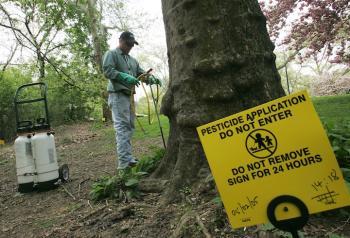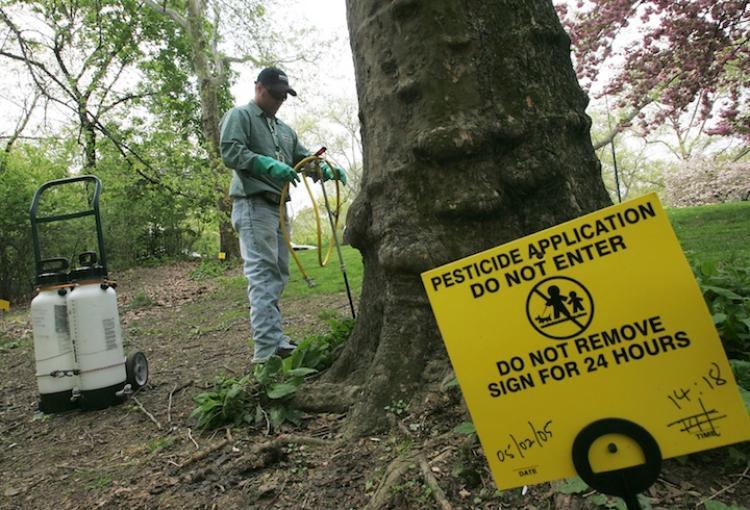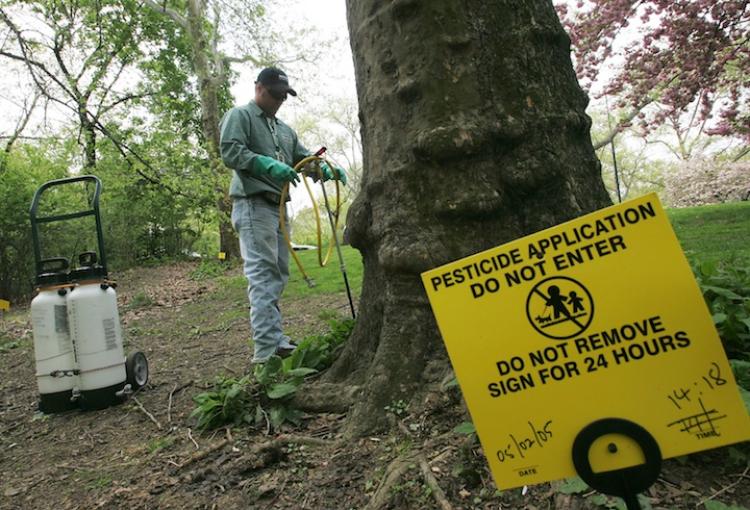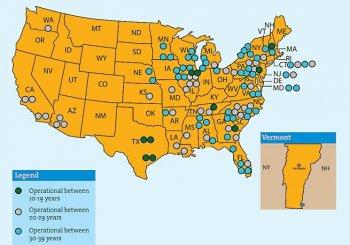The devastating Asian Longhorned Beetle (ALB) has been sighted in Massachusetts’ Jamaica Plain, a Boston neighborhood. The pest is infamous for killing trees by infesting the inner layers and eating the tree from the inside out.
During the past weekend, the beetles were found in six red maple trees at the Faulkner Hospital in Jamaica Plain. The trees were eradicated and officials at the state and federal level announced plans to further investigate the issue.
“While we are hopeful this is an isolated and contained incident, the City of Boston considers this issue to be very serious and we are taking every step to protect our trees by pulling together city, state, and federal resources,” said Mayor Thomas Menino, in an official statement.
A native to China, the ALB was first sighted in Massachusetts in 2008 in Worcester, causing more than 28,000 trees to be cut down in eradication efforts. Since its discovery there, $50 million in federal and local money has been spent to try to eradicate the beetle.
Reports from the USDA’s Animal and Plant Health Inspection Service (APHIS) warn that the spread of this species of beetle could result in billions of dollars of loss in the lumber, tourism, and maple syrup industries.
The beetle, which is native to China and Korea, may have been carried over in wooden crates originating in Asia, where it kills elm, maple, willow, and poplar trees.
Though the area in which the beetles were sighted is under official regulation, there are worries that the beetles, which can fly more than 40 feet to 50 feet, may have spread to Boston’s beloved Arnold Arboretum of Harvard University. The regulations require that no wood or branches be removed from the area.
The arboretum lies at the western border of the Faulkner Hospital. According to Harvard News, the team of arborists and horticulture technicians at the Arnold Arboretum are trained for detecting such cases and have been regularly monitoring for these pests since February of 2009. The last check, which took place in June, found no signs of an ALB presence.
However, there is room for error for these inspectors. According to APHIS estimates, inspectors identify only about one-third of beetle-infested trees using their primary inspection method.
The only known technique for stopping the spread of this beetle in the United States is to cut down the tree and chop its wood into small pieces, to kill the insects and larvae. Sometimes, the chopped wood is incinerated for assurance. The species has no known predators in the United States.
During the past weekend, the beetles were found in six red maple trees at the Faulkner Hospital in Jamaica Plain. The trees were eradicated and officials at the state and federal level announced plans to further investigate the issue.
“While we are hopeful this is an isolated and contained incident, the City of Boston considers this issue to be very serious and we are taking every step to protect our trees by pulling together city, state, and federal resources,” said Mayor Thomas Menino, in an official statement.
A native to China, the ALB was first sighted in Massachusetts in 2008 in Worcester, causing more than 28,000 trees to be cut down in eradication efforts. Since its discovery there, $50 million in federal and local money has been spent to try to eradicate the beetle.
Reports from the USDA’s Animal and Plant Health Inspection Service (APHIS) warn that the spread of this species of beetle could result in billions of dollars of loss in the lumber, tourism, and maple syrup industries.
The beetle, which is native to China and Korea, may have been carried over in wooden crates originating in Asia, where it kills elm, maple, willow, and poplar trees.
Though the area in which the beetles were sighted is under official regulation, there are worries that the beetles, which can fly more than 40 feet to 50 feet, may have spread to Boston’s beloved Arnold Arboretum of Harvard University. The regulations require that no wood or branches be removed from the area.
The arboretum lies at the western border of the Faulkner Hospital. According to Harvard News, the team of arborists and horticulture technicians at the Arnold Arboretum are trained for detecting such cases and have been regularly monitoring for these pests since February of 2009. The last check, which took place in June, found no signs of an ALB presence.
However, there is room for error for these inspectors. According to APHIS estimates, inspectors identify only about one-third of beetle-infested trees using their primary inspection method.
The only known technique for stopping the spread of this beetle in the United States is to cut down the tree and chop its wood into small pieces, to kill the insects and larvae. Sometimes, the chopped wood is incinerated for assurance. The species has no known predators in the United States.




